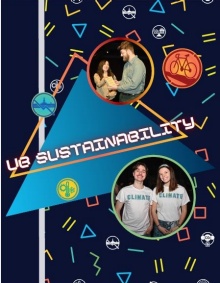The data, research and scholarship are abundantly clear — we have ten years to make a substantial impact in mitigating the most catastrophic effects that will accompany a changing climate. The world’s scientific community (including many of our own leading researchers here at UB) have defined the problem, illustrated what will happen if we do not adapt and most importantly created alternative pathways for us to pursue.
Why Now?
We live in complicated and changing times — perhaps more so than at any other period in history. We are starting to transition to systems that are more circular, regenerative, inclusive, effective and that mirror the Haudenosaunee principle: to make every decision considering its effect on seven generations.
This change is happening because we are heeding scientists' warnings that waiting until the impacts are felt will be too late. The economic and business benefits of reducing emissions are clear, and New York State is providing the legal framework to support UB’s efforts. Students and young people demand urgent action, and our future depends on it. These factors make now the ideal time to update our decade-old climate action plan, reaffirming our commitment to science-based climate neutrality by 2030.
Climate Action Plan Updates
⏪ Looking Back, Moving Forward ⏪
Before we hit fast forward into the future, let’s press play on a throwback journey through the past year—90s style! This 2024 in-review offers a nostalgic yet insightful look back at our progress, challenges, and successes. Join us as we rewind through the past year, celebrate our accomplishments, and set the stage for an exciting future ahead. 👉 Click to Rewind
New York State is leading the nation in our fight against climate change. The newly-enacted Climate Leadership Community Protection Act has created a legal framework that greatly increases support for UB’s climate action. In addition, the State University of New York and numerous other higher education organizations and partners are implementing far-ranging low carbon policies to support our common objective.
The market is shifting. Companies and organizations are recognizing the risks that extreme weather events create for their infrastructure, supply chains and customers. But they are also seeing opportunity to create new and innovative solutions, recruit and retain forward thinking purpose based talent, and advance sustainable development to establish a more robust and effective business ecosystem.
The Brookings Institution estimates that we are on track to see an annual 2% drop in GDP as the effects of climate change become more pronounced. But the good news is the economics are shifting and numerous low carbon technologies are now becoming competitive and cheaper than their fossil fuel counterparts — nowhere is this more prevalent than throughout the clean energy sector.
Our world is demanding climate action, and it’s being led by our students. While support for lowering emissions permeates all generations, millennials and Generation Z are leading the charge — 40% of them cite global climate change as the most important issue we currently face and 31% are actively boycotting companies and organizations that do not advance climate neutrality principles.
The problem of climate change is the problem of how and whether human beings can live together sustainably on this planet. It is forcing us to confront key issues centered on equity, personal responsibility, democratic institutions, collaboration and hope. At its core, climate change is about us and who we need to become.






